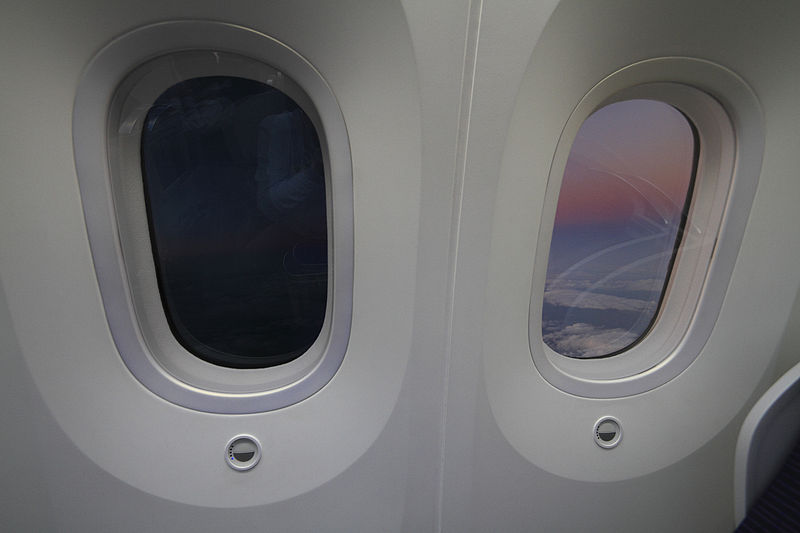Aerospace
How The Boeing 787 Dreamliner’s Dimmable Windows Work

A unique feature of the Boeing 787 Dreamliner is its dimmable windows, which enhance passenger comfort and overall experience. The Dreamliner’s windows employ an electrochromic technology, as opposed to conventional aircraft windows with physical shades.
Electrochromic windows are made of special materials that can change their tint or opacity when an electric voltage is applied. In the case of the boeing 787 dreamliner, There are two pieces of glass with a thin layer of gel between them. The gel’s opacity is altered chemically when an electrical current is applied to it.
The passengers cannot see the electrodes because they are positioned on the sides of the windows. Additionally, the windows are networked so that flight attendants can have centralized control.
A button or touchscreen control next to each passenger’s seat allows them to change the amount of tint in the windows. Passengers can control the amount of sunlight entering the cabin without using physical window shades with technology that allows a gradual transition from transparent to different shades of dimness.
These dimmable windows have numerous advantages. The crew can create a cosier atmosphere inside the cabin and passengers can enjoy the outside view without glare. In addition to reducing the need for conventional window treatments, the dynamic control over light also contributes to a sleek and contemporary interior design.
Furthermore adding to the dreamliners overall energy efficiency are the dimmable windows. The aircraft can better control its temperature and save fuel by minimizing the amount of direct sunlight and the need for physical shade.
Overall, the Boeing 787 dreamliner dimmable windows demonstrate state-of-the-art technology that improves passengers’ in-flight experiences while providing useful benefits in terms of energy efficiency and aesthetic design.

Aerospace
When Ratan Tata was denied entry to the airfield at the Aero India show, he waited

During our visit to Aero India 2019, we had the unexpected opportunity to see Ratan Tata at the event, which was a thrilling moment for us. However, there was a surprising hiccup when the security staff didn’t allow him to enter due to a lack of a security pass.
Despite this, he remained calm and patiently waited for about 20 minutes until a member of the Tata team brought him the required pass, after which he calmly proceeded inside. It was a humbling sight, showcasing his composed demeanor even in such situations.
Ratan Tata ji is not only a renowned industrialist but also a trained pilot, holding a pilot’s license. In 2007, he became the first Indian civilian to fly the F-16 Falcon during the Aero India show in Bangalore—a proud moment for the nation.
His passion for aviation extended beyond flying, as he played a key role in shaping India’s aerospace industry. Under his leadership, Tata ventured into manufacturing and maintaining aerospace components while upholding its legacy of quality. Notably, Tata’s collaboration with Airbus to develop and manufacture the C295 aircraft is a testament to its growing influence in the sector.
-

 Aviation2 months ago
Aviation2 months agoBoeing confirms 797: A New Era for Mid-Size Aircraft
-

 Aviation2 months ago
Aviation2 months agoMicrosoft Flight Simulator Raises $3 Million to Bring Back the An-225 Mriya
-

 Aviation2 months ago
Aviation2 months agoLockheed and Tata Team Up to Build C-130J MRO Facility in India
-

 Airlines2 months ago
Airlines2 months agoQantas Engineers Stage Walkout Over Cost of Living Concerns
-

 Airlines2 months ago
Airlines2 months agoQatar Citizens Can Travel to the United States Without a Visa
-

 Aviation2 months ago
Aviation2 months agoBoeing Offers 25% Pay Increase & Promise to Build Next Plane in Seattle
-

 Aviation2 months ago
Aviation2 months agoQatar Airways bans these new Electronic Devices on plane
-

 Airlines2 months ago
Airlines2 months agoEmirates Ends 28-Year Singapore-Melbourne Fifth Freedom Route








